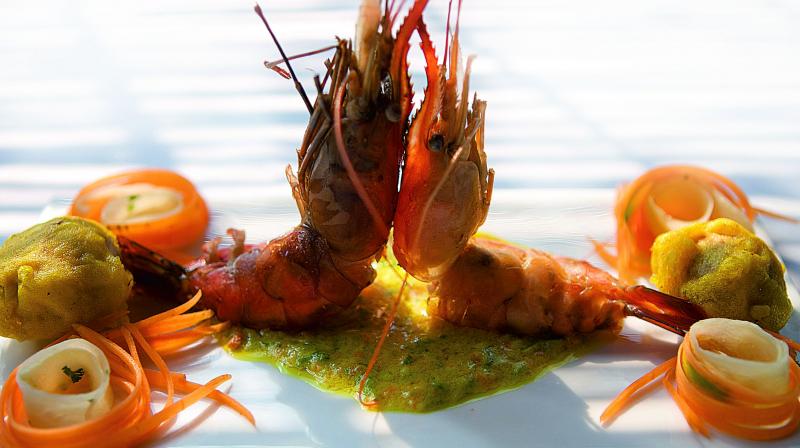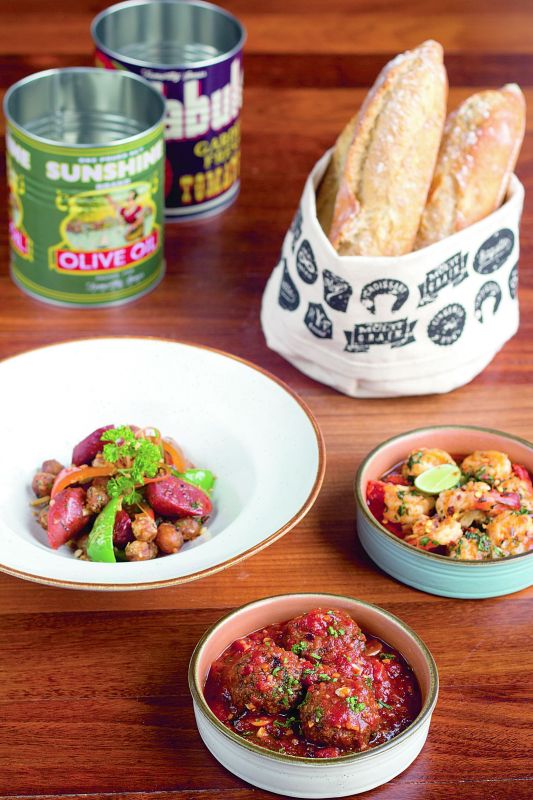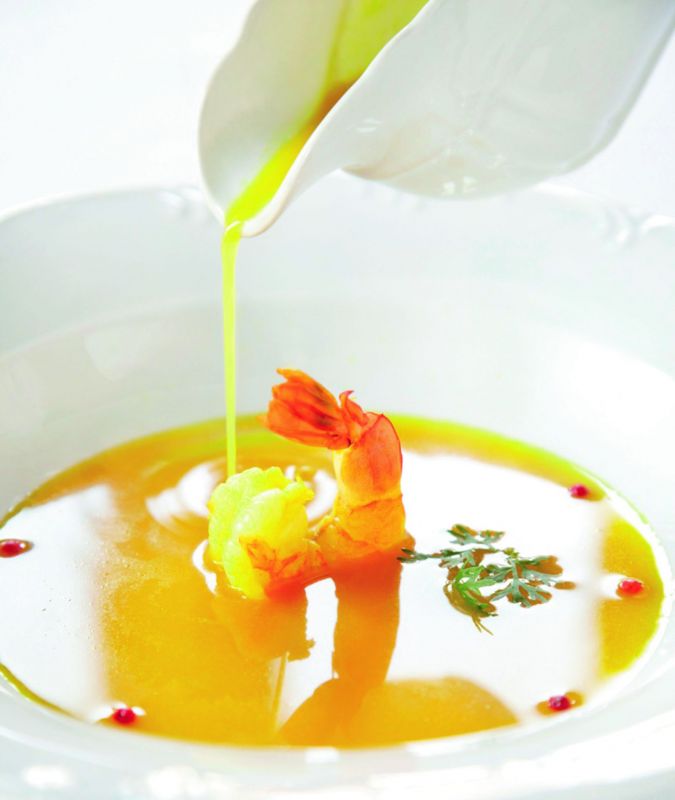Something fishy
From the mustard hilsa of Bengal to the toddy vinegar based prawn recheado of Goa, Fareeda Kanga explores the versatility of shellfish.

I don’t know if it’s a cultural thing or just a personal preference, but mention the word ‘fish’ or ‘poisson’ or ‘macchi’ (it could be in any language) and my mouth begins to water.
As a food writer, I am fascinated by the multifarious ways in which fish, particularly shellfish, is prepared around the world.
I’m savouring a delicate preparation of pan-seared shrimp with shellfish jus at 30,000 feet on board the French national carrier. Michelin-starred chef, Guy Martin’s masterful creation for Air France makes in-flight cuisine a gastronomic treat par excellence!
Whilst such European-style fish dishes rely on subtle flavours, our Indian preparations hit all the high notes too. From the mustard hilsa of Bengal that sets your taste buds on fire to the toddy vinegar based prawn recheado from Goa that is reminiscent of a Portugese style of cooking — the versatility of shellfish ensures that there is a recipe for every palette.
WHAT IS A FRESH CATCH?
In my quest to discover the freshest catch, I contact Tracey Jeffery — a specialist in gourmet food tours for Northern Ireland. She has me wading thigh deep on an oyster farm with Frenchman Patrice Bonnargent.
I learn as I trudge through the icy water that oysters are farmed in almost the same manner as they were since Victorian times. Because of the confluence of fresh and salt water in this region, the oysters get a nutty taste without being overly salty.
“The minerals make a difference,” explains Patrice, who compares such variations in flavour to that of wine from different regions.
Whilst farming for fresh oysters is a one-off experience, how can we be sure the seafood we buy at the market is almost as fresh?
Here’s the ultimate guide: Whole fish should have clear eyes and a fresh aroma. Clams, mussels and oysters should have closed shells.
Prawns should be firm to touch and lobsters and crabs should be alive and moving. Fish fillets should be delicate but firm to touch.
With today’s superior refrigeration and freezing techniques, seafood is exported quite safely around the world. Some cultures like the Danes relied heavily on smoking techniques to preserve fish, as do the Chinese with their famous dried prawns.
Health benefits
Almost all fish is healthy food: low in fat, containing essential amino acids and a good source of copper, iron and zinc, all of which boost the immune system.
STORAGE AND PREPARATION
Always keep seafood in the freezer section until ready to cook or serve. Surprisingly, most seafood takes very little time to cook. Just a few minutes on a high heat, and you are done.
Overcooked fish is tough and awful in taste. You can always cook it off the heat for a minute or two in a heated pan. Keep the skin on the fillet for extra flavour and size. Skinless fillets are best for sautéed European style dishes.
GAMBAS AL AJILO
Ingredients
¼ cup prawn oil
2 tbsp butter
250 gm prawns (cleaned)
3 tbsp garlic cloves, sliced
2 tbsp fresh lemon juice
1 tsp paprika
Red pepper flakes to taste
2 tbsp flat leaf parsley, chopped
Salt to taste.
For prawn oil
In a saucepan, heat 250 ml cooking oil. When hot, add shells of 15 prawns with heads in the oil. Cook till the bubbling stops. Strain it with fine sieve and let it cool.
Method
Warm prawn oil and butter in a wide, shallow sauté pan over high heat; add prawns and garlic, and sauté quickly for about 2-3 minutes till they are almost cooked.
Add lemon juice, paprika, pepper flakes, salt and pepper to taste. Adjust seasonings to your liking.
Transfer to a warmed serving dish; garnish with parsley and serve.
Courtesy: Chef Urvika Kanoi, Bodega Cantina-Y Bar.
SEAFOOD FRICASSEE
Ingredients
500 gm mussels
500 gm prawns
1 kg clams
200 gm crab meat
2 cloves garlic, chopped or pureed
150 gm shallots, chopped
2 sliced carrots
1 sliced leek
200 ml whipped cream
100 ml dry white wine
1 bay leaf
2 sprigs thyme
Salt and pepper
40 ml rapeseed oil
Method
Heat the oil in a pan and add chopped vegetables with garlic and keep cooking until soft. Remove the vegetables from the pan once soft and add clams and mussels. Cook until all the shells open, and remove from the pan reserving the juice.
Place the juice from the shellfish into a pan and reduce. Once reduced by half, add cream and vegetables and bring to a boil. Add crabmeat and prawns. Heat and serve.
Courtesy: James St. South Cookery School, Belfast



